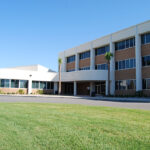introduction post.
Erika Goines is the digital media program coordinator for the digital media degree program at Gulf Coast State College. She’s had a variety of careers in the digital media industry and has the unique experience of being in charge of a program at the same university that she graduated from.
The following consists of a few highlights from my interview with Professor Goines, which have been condensed and edited slightly to fit this post. The full interview can be seen in the video below.
Erika Goines’ College Experience
So where did you go to school?
I actually started Gulf Coast two weeks after I graduated high school in the radio and television broadcasting A.A. degree track. I’d taken dual enrolled classes in high school so I started in the summer and graduated the following summer.
I’d gotten a job working for Clear Channel Radio my first fall semester, so I decided when I graduated I wanted to stay here because of my job at the time. So I went across the street to FSU, and got my bachelor’s degree.
At that time I was a music director in Clear Channel. I really didn’t want to leave so I stayed here and got my master’s degree.
What was your master’s degree in?
My master’s degree was in communications. Things like digital media didn’t exist then, so I took classes in pagemaker and Photoshop MX when they were first introduced to the market.
It was when that technology was first getting introduced and I really picked up on it. I can remember sitting in class and we’d be working on the projects and I’d be done waiting on everybody else to finish. It was just one of those kind of things that I had a really good knack for as it got started.
Working in the emerging field of digital media
So back then were you more interested in communications like radio and journalism, or were you more interested in the kind of emerging field of graphic design and digital media?
I was more interested in radio and journalism at that time. Not necessarily being on the radio – I was very much a behind-the-scenes oriented. I did production work, commercial work, and stuff like that. Working in radio’s where I first got my intro to web design and graphic design! The station started having to be responsible for their websites and so I got deemed the “website” person for our station.
So you just had to jump in and learn it?
I just had to learn it. It was all kind of self-taught, here you go, research. That’s where I kind of fell in to that stuff. When I left radio I went to work in television doing sales, which I hated…
What did that entail?
I was a sales assistant, which was a lot of number-crunching, calling clients, and stuff like that. I’m not a salesperson, if somebody tells me no I’m like, ‘okay, thank you, have a good day’. Like, I’m not gonna be able to schmooze you. I just don’t have the personality for it.
So I started working with the production team doing some production work. From there I had come back here briefly, working in financial aid for the college – but at the same time I was doing underwriting spots for the radio stations. Then I left and went to the school board where I did web and graphics for them for about 10 years, full-time and part-time mixed in.
So you’ve worked in almost every area the program covers, that’s pretty cool.
Yeah! I’ve experienced all of them. I tell students that I’ve gone through the gamut, I just went through it before it had a category of digital media. It was just radio media, television media, or graphics at the time. Now it’s all mixed under this big umbrella of digital media.
Transition from industry work to education
So what made you want to teach?
It’s been the job I wanted for forever. My grandmother was a teacher. My mom is a hoarder, so she kept like all the stuff you would write as a kid. She had one of those books that every year you’d write what do you want to be when you grow up, and for the longest time it was teacher.
I can remember my mom saying you need to get a job that can afford yourself. She didn’t push against the teaching, but she kind of encouraged me to look at different avenues. She just didn’t think that teaching was going to be sustaining, but I think her concept of teaching was k12 teaching.
I just knew I liked the idea of teaching. When I was at the school board one of the guys I worked with was an adjunct professor out here, and he said they needed an adjunct for the radio classes asked ‘do you want to do that?’ So I really kind of fell in love with the college teaching at that point because you can gear your curriculum towards what the skill set that you want the students to have. It’s not like k12 where you know it’s like English six periods a day.
Did you have to teach classes that you took when you were in the program?
Yeah, it was kind of weird. I was really kind of a flashback to that time frame. But it was interesting to be able to think about what worked for me when I was a student and what didn’t work for me, then meld that around how I was going to teach.
From adjunct professor to program manager
So how did you come to be in charge of the digital media program?
When I started teaching there was no program manager, and we were all just adjunct professors. You really can’t have a program built entirely around adjuncts because there’s nobody that the students know to go to if they have a problem with the program, or a professor, or if they need advising. That leaves the students in a uncomfortable situation because it makes them feel like the program lacks a foundation. So when they started looking for a full-time faculty member and program coordinator I applied.
I’d been at the school board for a long time and it wasn’t that I disliked what I was doing, because I loved my job there. But, I just really liked teaching. I’m a perpetual student so I really like the concept of a being in a school environment and this is a field that you have to keep learning because this technology is constantly evolving.
So you have to make sure the program is ahead of the trend so your students are prepared.
You do. The reason why I work so hard to keep up with all of the trends is because when I started classes we were cutting tape, and when I started working at the radio station the next semester they didn’t use tape anymore. So I at least want them to be introduced to what they’re going to be facing.
I still take classes too. I’m constantly looking at what classes are being offered by different training organizations, even if it’s in something that I feel like I already have knowledge of because I want to see what skillset they’re teaching. Like, I’m looking at doing a web design class right now that takes you through web design and responsive design, but then you’re also getting into implementing bootstrap, and what frameworks can do.
Those types of trainings target professions in the workforce, which is essentially the skillset that we need to prepare our students for.
So what all goes into managing a program besides teaching courses?
I have a really unique situation with my students because I’m the only full-time faculty member. One aspect is the constants evaluation of the program. Since technology is constantly changing, I think we’ve gone thought three pretty substantial program changes since I started. We really used to push flash before Apple helped to eliminate it. So I focused on what the skills that industry in our surrounding area were looking for, and tailored the specializations to that. The specializations still have a lot of overlap which helped form our foundational courses.
You constantly have to evaluate and review the program in order to make sure that you’re serving the best interest of the student.
How often do courses change?
Ideally every three years, but with our curriculum that’s something hard to stick to if you get really dramatic shifts in technology. Adobe has also made it really hard because of their constant updates – their software changes a lot each year.
I couldn’t have told you when I started teaching here that I thought that we would be having to research how we can implement virtual reality, or that we were gonna have to learn how to edit 360 videos. Now you’ve got 360 cameras and we’re looking at okay how do we integrate the use of 360 cameras into the curriculum, because that may be something that students have to face
How much does student input affect the curriculum?
A lot. I do surveys with students, and I try to sit down and have really candid talks on how a curriculum works for them. One of the things that I did for a while was changing how I taught the course every semester. But that gets exhausting, and I found in retrospect that I wasn’t giving myself enough time to hone it to the best interests of the students.
Now if I’m looking at changing a book I’ll get a handful of books I’m considering and take it to my students who have just finished that course, and let them look over the books and tell me which one would have been the best resource for what they just learned. So far that’s been a pretty good system and the changes have been really positive.
Conclusion
This is only a small summary of my conversation with Erika Goines, and I highly recommend listening to the full interview. Look out for the next six issues of “Instructor Insights” where we’ll be talking to other professors in the digital media & technology management programs.
About the Author

Samuel Lane Lourcey
Student - Spring 2018







